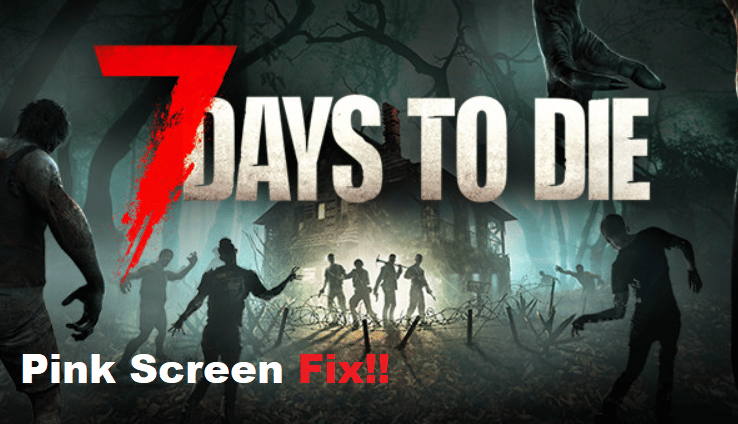
7 Days to Die has become one of the most popular zombie games around, and its co-op nature makes it incredibly fun to play with friends or family members, but some players have encountered a problem where the game screen turns pink upon startup.
This guide offers seven ways to fix this issue. However, before you jump right into these fixes, be sure to check your game’s system requirements and make sure that your computer meets those requirements before diving into this guide on how to fix the pink screen in 7 Days to Die.
Fixing 7 Days To Die Pink Screen:
- Check Your Video Settings
If you are experiencing a pink screen when playing 7 Days to Die, then the issue may be related to your video settings. Before we dive into troubleshooting, it is important to understand what the pink screen issue is and why it occurs.
The pink screen issue is caused when the game attempts to load a texture or other graphical element that does not exist in the game files.
This can occur if you are using a custom mod or texture pack that has been installed incorrectly, or if there is an issue with the game’s video settings.
To check your video settings in 7 Days to Die, open up the main menu and navigate to the Options tab. From here, select the Video tab and scroll down to the Video Settings section.
Here, you can adjust the game’s resolution, anti-aliasing, texture filtering, and more. Make sure that all of these settings are set to their default values, as any deviation from these values may cause the pink screen issue to appear.
Once you have adjusted your video settings to their default values, try restarting the game to see if the pink screen issue has been resolved. If you are still experiencing issues, then you may need to look into further troubleshooting steps.
- Change Your Resolution
Are you experiencing a pink screen when trying to play 7 Days to Die? Don’t worry, this is a common issue that can be easily solved. Here’s how you can fix it.
The most common cause of the pink screen issue in 7 Days to Die is a mismatch between the game’s resolution and the resolution of your monitor. To fix this, you’ll need to change the resolution of the game.
First, open up 7 Days to Die and go to the Options menu. Then click on Video Options and select the Resolution tab.
You’ll see a list of supported resolutions for the game. Select one that matches your monitor’s resolution.
Once you’ve made your selection, click OK and restart the game. This should fix the pink screen issue. If it doesn’t, try using a different resolution or contact technical support for assistance.
- Update Your Graphics Drivers
The most common cause of the pink screen problem in 7 Days to Die is outdated graphics drivers. If you are having this issue, it’s important to make sure that your graphics drivers are up to date.
Updating your graphics drivers is easy and should take no more than a few minutes. First, you need to find out which graphics card you have installed on your computer.
You can do this by going into your system settings and finding the Display section. The type of graphics card will be listed there.
Once you know which graphics card you have, you need to go to the manufacturer’s website and find the appropriate driver for your card.
Download and install the driver, then restart your computer. This should resolve the pink screen problem in 7 Days to Die.
- Verify Your Game Files
If you are experiencing a pink screen while playing 7 Days to Die, the first step is to verify that your game files are intact. To do this, you need to access the Steam library and right-click on 7 Days to Die.
Next, select Properties, then Local Files, and then Verify Integrity of Game Files. This will scan your game files to make sure they are up-to-date and working correctly.
If any of the files have been corrupted or are out of date, Steam will download them again and replace them with the correct versions.
Once you have verified your game files, try launching 7 Days to Die again. If the pink screen persists, it could be caused by outdated graphics drivers or other system issues.
In this case, it is recommended to update your graphics drivers or investigate any system errors that might be causing the issue.
